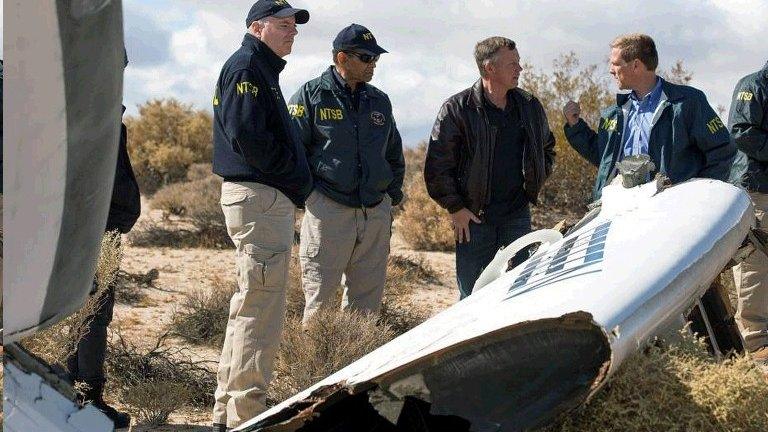Jeff Bezos conducts New Shepard flight
- Published
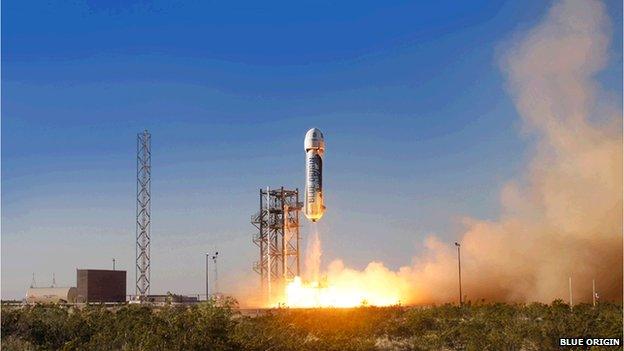
New Shepard comprises a booster and capsule - both of which are recoverable and re-usable
Blue Origin, the US space company set up by Amazon entrepreneur Jeff Bezos, says it has conducted the first test flight of a new sub-orbital vehicle.
Pictures released by the firm show the New Shepard ship launching vertically from the ground in Texas to reach a reported altitude of 93km (307,000ft).
"Any astronauts on board would have had a very nice journey into space and a smooth return," Bezos said on his blog, external.
The booster that took the capsule up is said to have failed on the way down.
It is supposed to land vertically and softly, ready for another flight, but a hydraulic problem meant this part of the mission did not go as planned.
Correction 'in hand'
The separated capsule did, however, perform in the way intended - and came back under parachute.
Unmanned this time, it has room for six individuals.
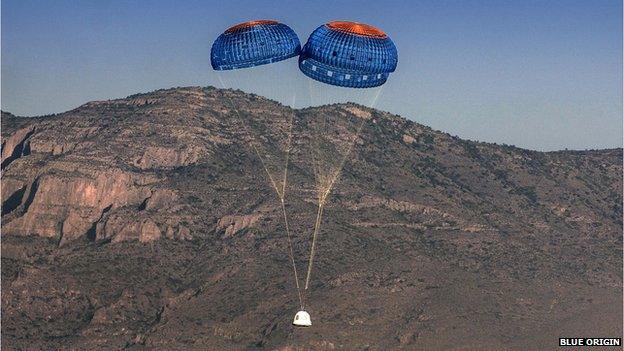
The capsule came back in the way intended, but the booster had a failure on return
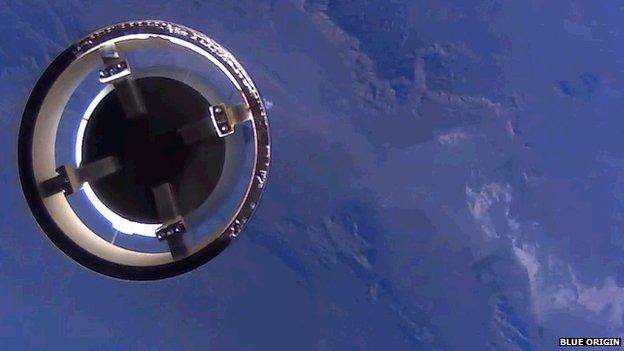
The capsule looks down at the booster just after their separation. The capsule climbed to 93km
New Shepard is named for Alan Shepard, the first American in space.
It is aimed at the same tourist market as British entrepreneur Sir Richard Branson's rocket planes.
Unlike the Virgin boss, however, Bezos has been much more reticent to show off his space-development activities. Nonetheless, Blue Origin's work is highly regarded.
United Launch Alliance, the company which puts up America's national security missions, has selected Mr Bezos to build the engines for its next-generation rocket called Vulcan.
Nasa, too, has been working with Blue Origin as it seeks new systems to launch its astronauts into space.
Bezos said a correction for the glitch that stopped New Shepard's booster from landing under control was already in hand.
An updated hydraulics system has been in design for some time, he explained.
"We continue to be big fans of the vertical takeoff, vertical landing architecture," he wrote in the blogpost.
"We chose VTVL because it's scalable to very large size. We're already designing New Shepard's sibling, her Very Big Brother - an orbital launch vehicle that is many times New Shepard's size and is powered by our 550,000-lbf thrust liquefied natural gas, liquid oxygen BE-4 engine."
Video released by Blue Origin, external did not show what happened to the booster on its descent.
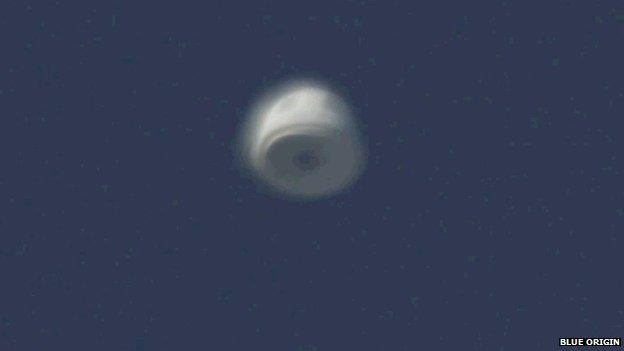
A long lens camera catches the capsule high in the atmosphere
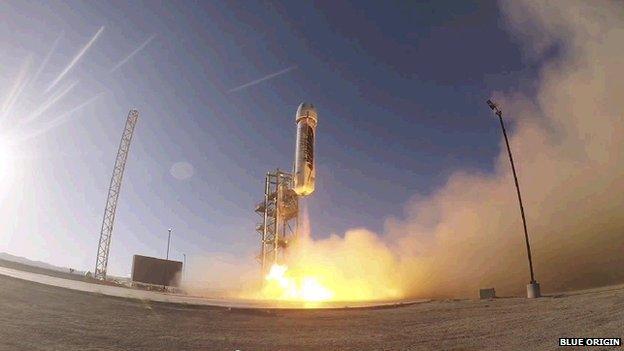
Blue Origin has not released images of the booster's uncontrolled return to Earth
Jonathan.Amos-INTERNET@bbc.co.uk and follow me on Twitter: @BBCAmos, external
- Published14 April 2015
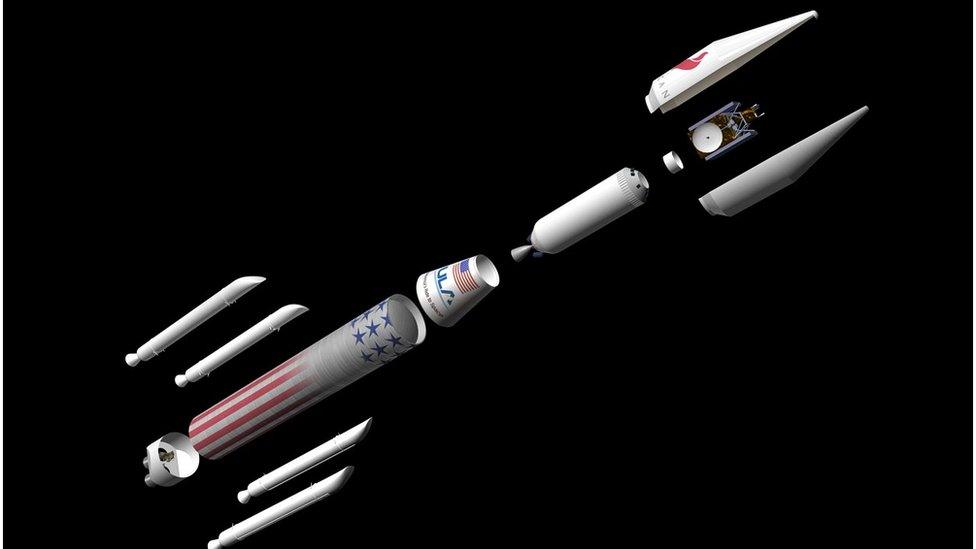
- Published4 November 2014
